‘Spitfires belong in the skies’: The engineers keeping the Second World War fighters flying
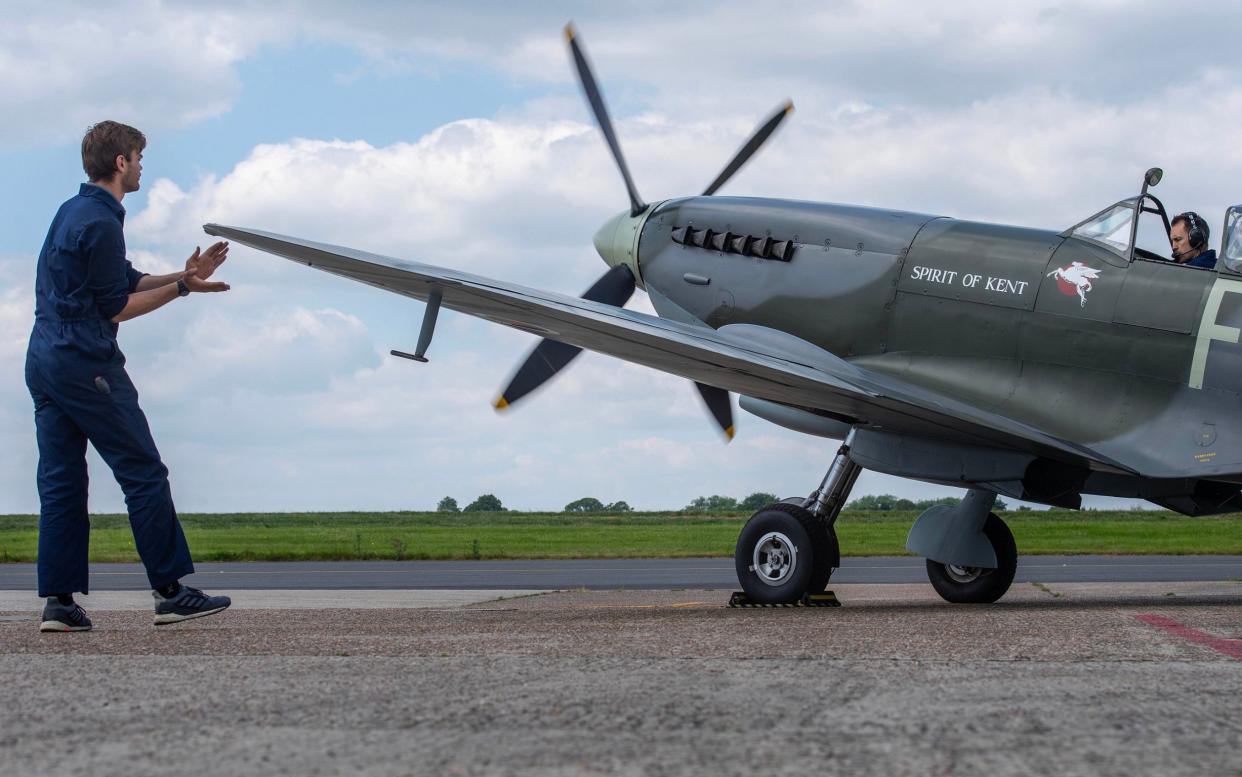
On a bright Wednesday morning in Biggin Hill, south-east London, Joe Hurst clambers into the cockpit of Spitfire TA805, a Mk IX, on which “Spirit of Kent” is emblazoned in white lettering. He checks his instruments and starts the engine. A puff of bluish smoke erupts from the exhaust as the Rolls-Royce Merlin growls into action. Hurst’s colleague, Simon Groves, whips the chocks away and the plane wheels across the apron.
During the Second World War, Spitfires took off from Biggin Hill to do battle with the Luftwaffe. Now they take paying customers up for a once-in-a-lifetime experience, starting at £3,000 for a half-hour’s flight. Or they fly in displays, helping to maintain the sound and sight of these machines in Britain’s collective memory.
As celebrations around the country, and in Normandy, commemorate D-Day, last week there was a reminder that while we may no longer be at war, flying one of these old machines can be fraught with danger. On May 27, Squadron Leader Mark Long was killed when the Spitfire he was flying, part of the Battle of Britain Memorial Flight, crashed into a field in Lincolnshire, not far from RAF Coningsby. The RAF praised a “great friend, colleague and a passionate, professional aviator,” while the Prince and Princess of Wales said they were “incredibly sad” to learn of the death.
Although the cause of the crash has yet to be determined, the fatal accident has shone a light on the vital work being done by engineers around the country in keeping these 80-year-old machines in the air.
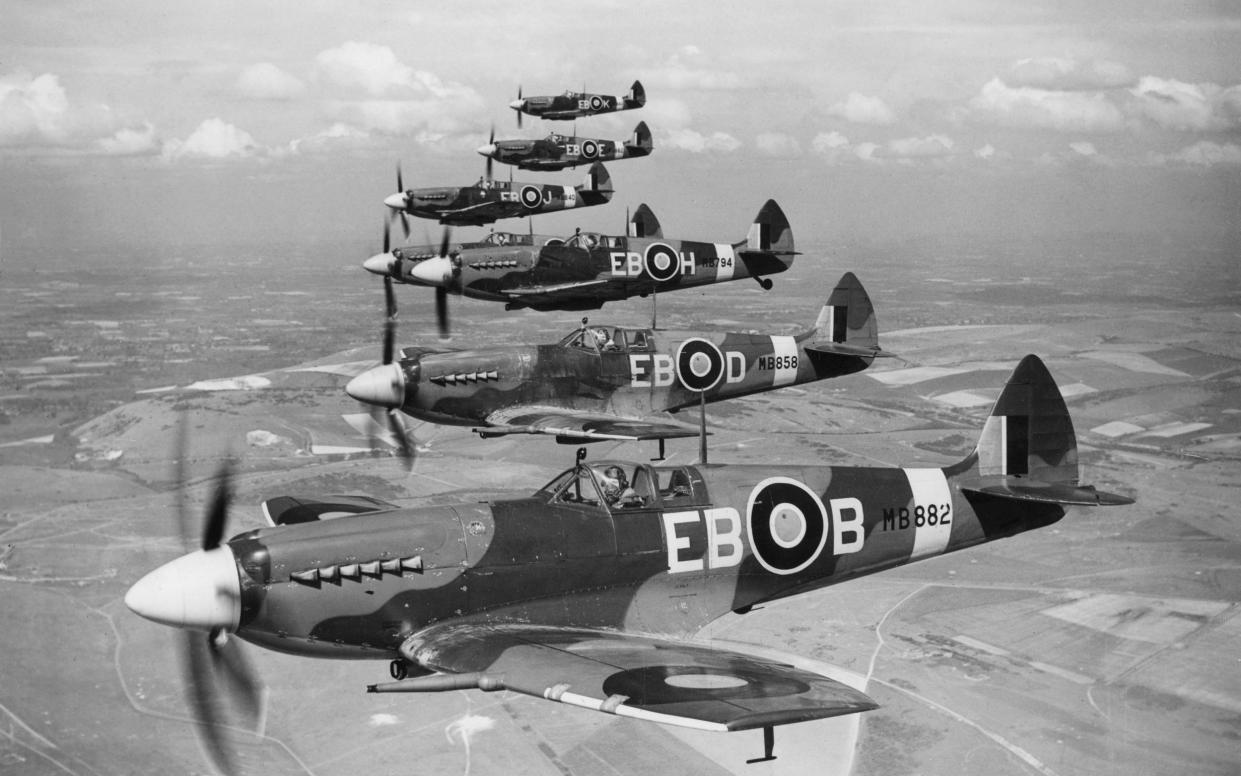
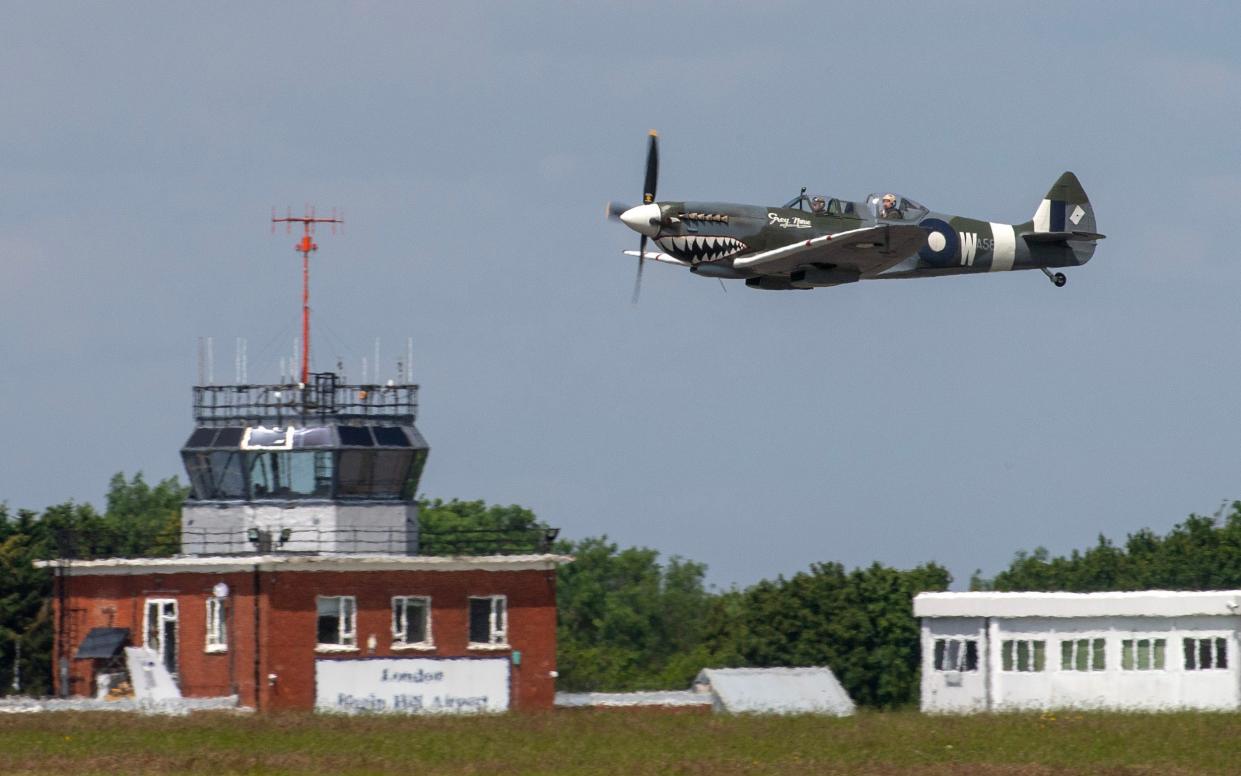
“I’ve worked at Biggin Hill since I left school 25 years ago,” says Hurst. He started on commercial jets before moving into the heritage hangar, where he now spends his days rebuilding, servicing and maintaining Spitfires and Hurricanes. “If someone had asked me at school what my dream job would be, this is pretty much it. I had a passion for old aeroplanes. My grandfather was in the RAF, my other grandfather was in the USAF. It’s not just about the aeroplanes, I like the history as well.
“I actually like the Hurricane more than the Spitfire,” he adds. “Everyone remembers the Spitfire because of the shape of the wing and the name, whereas the Hurricane was actually the workhorse. There were more Hurricanes than Spitfires. Without them we probably would have lost the Battle of Britain, and who knows what would have happened then.”
The Biggin Hill Heritage Hangar, started by the businessman Peter Monk in 2012, is one of the world’s leading Spitfire restoration and maintenance facilities. Here, in two large rooms, are stored a collection of Spitfires, Hurricanes and other vehicles from the war, including a Messerschmitt Bf 109 and Steve McQueen’s original jeep. It serves as a museum, kind of a mini-Duxford, as well as a working building, where Monk’s team of engineers, including his son, Alex, restore old or damaged aircraft as well as keeping the existing ones flying. For anyone interested in these aircraft, it is heaven, like a Battle of Britain Kwik Fit,

“They are labour intensive,” Hurst says. “Physically the worst part is taking the fuel tanks out. You have to lie on your front in the cockpit, trying to undo unions and fuel pipes.”
So far they have restored more than 16 planes to working condition, or around a quarter (of the 60 or so) thought to be working worldwide. An airframe, often damaged, will be found languishing in an airfield somewhere and shipped back to Biggin Hill, where it will meticulously be brought back to life. Spare parts are tricky to find: Monk and his team spend much of their time trading with museums around the world for the bits and pieces they need. Everything else must be made from scratch. Where necessary, modern materials are used – typically in the spars and the rivets.
“The rivets in the original Spitfires would have been magnesium, which have turned to chalk – they corrode and perish,” Hurst says. “We use a modern material, which will probably last forever. And the primers and metals and paints we use are better.” There is a cottage industry in making new parts. “There’s a guy in Audley End who does the fabrics; another guy in Cambridge does the fuel tanks, another does the radiators.”
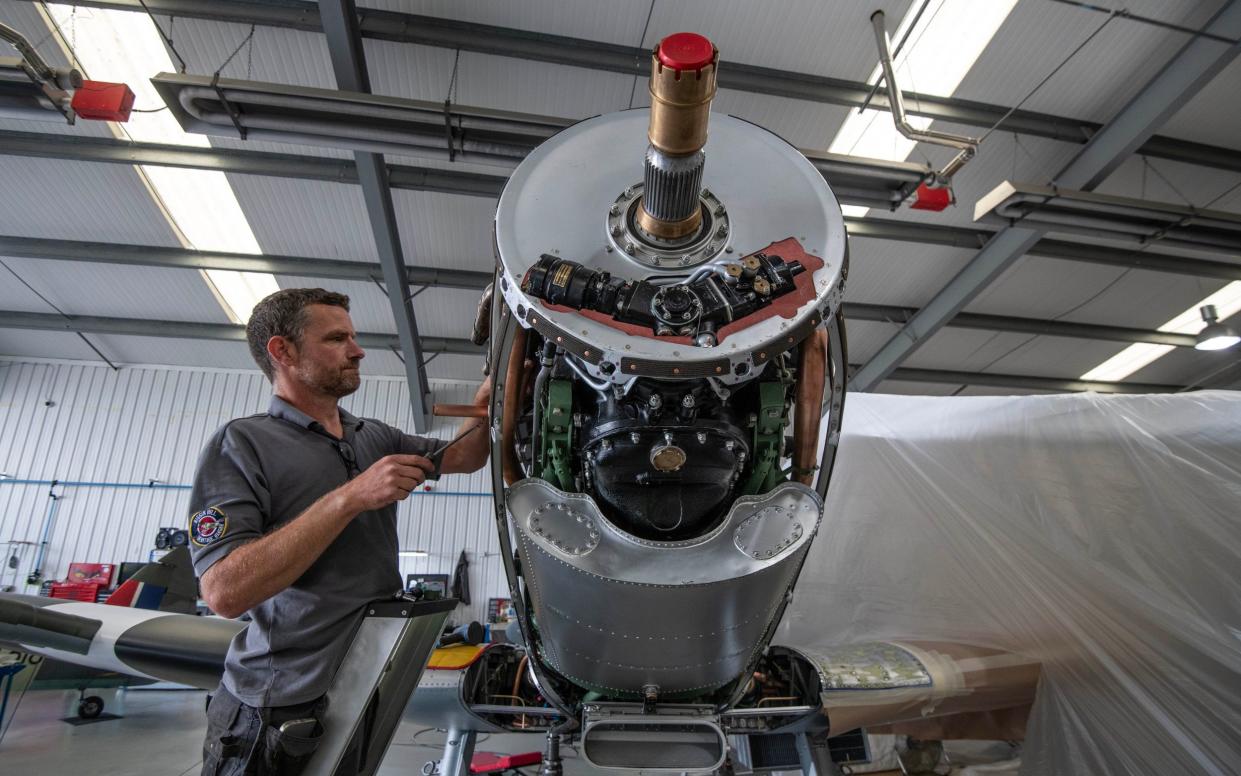
In a far corner of the room, Dave Brock, 60, has two tasks on the go. He is making an engine bearer – the frame the Merlin rests on – for one of the planes they are restoring, alternating between working on that and restoring a Hurricane fuel tank which has been damaged. Like Hurst, Brock worked in the commercial sector before moving over. “I wanted to work in restoration for years, but I never had the opportunity,” he says. “I love the variety of the work and the freedom you have to make things.” Working on these aircraft has given him renewed appreciation for the men who built and flew them in the 1940s.
“It was all done with a ruler and a pencil. It’s not like now when you just chuck it into a computer. Someone sat down and designed it, with all the stresses and the loading. These planes have soul,” he adds. “I went up in one, and it wasn’t so much the flying, but the thought that there was an 18-year-old kid up the front, with about four hours experience, going to shoot down Germans.”
Once complete, some are kept, others sold to collectors and enthusiasts. It is not a cheap hobby. A fully restored Spitfire can cost up to £3 million, plus £40,000-£50,000 per year in insurance, with maintenance costs on top of that. An annual inspection could be another £50,000. One of the owners keeps his plane at Biggin Hill like others might keep a classic car, popping over to fly it down to Goodwood, perhaps, or hop over the Channel. While the RAF have more discretion over how they treat their planes, the Spitfires restored for everyday use must adhere to stringent Civil Aviation Authority regulations.
If Brock is in a later part of his career, his colleague Simon Groves, 19, is just starting out. He has been at Biggin Hill for two and a half years, having originally come on work experience.
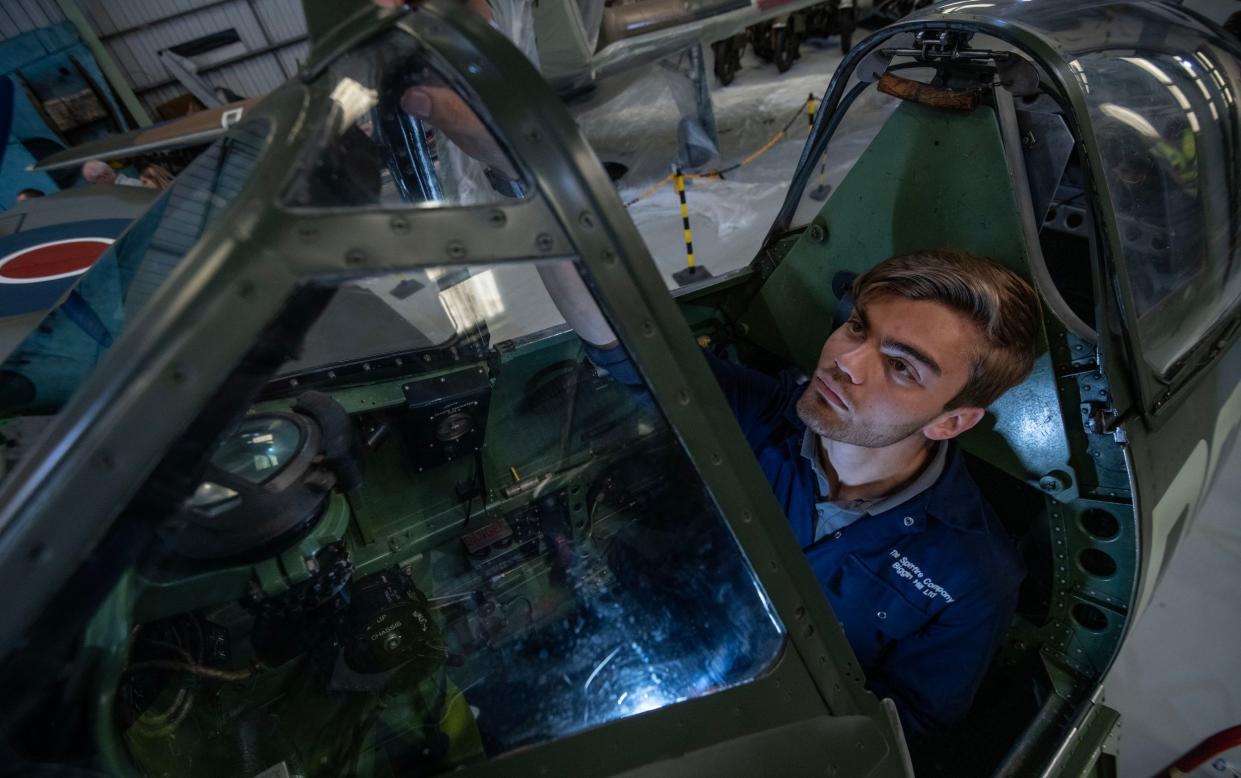
“When I arrived I knew that they had Merlin engines, propellers and wings, that was about it,” he says. “It’s only when you start taking panels off that you see what’s underneath. I’ve been following the other engineers. If you have a problem with your car you Google it. These, you can’t, which is what I like. It’s problem-solving. I like the engine side of things especially. You’ve got 12 cylinders, they’re all going off at once, but at a certain time, and there’s not a single computer. It’s all switches and valves: magic. Everything is mechanical. If there’s something wrong with it, there will be a reason for that.”
Despite his preference for the Spitfire, he concedes the Hurricane is easier to maintain. “The Hurricane was to test the principle, and it was an incredible machine, but the Spitfire refined it. It’s more elegant, just a beautiful bit of engineering. But working on them, certain parts of the Spitfire are easier. Take the hydraulic rams, which bring the wheel up. On the Spitfire they are deep under the tanks, so it’s a two-day job. On the Hurricane you can do it in an afternoon. Hats off to the guys who maintained them during the war on the scale they did.”
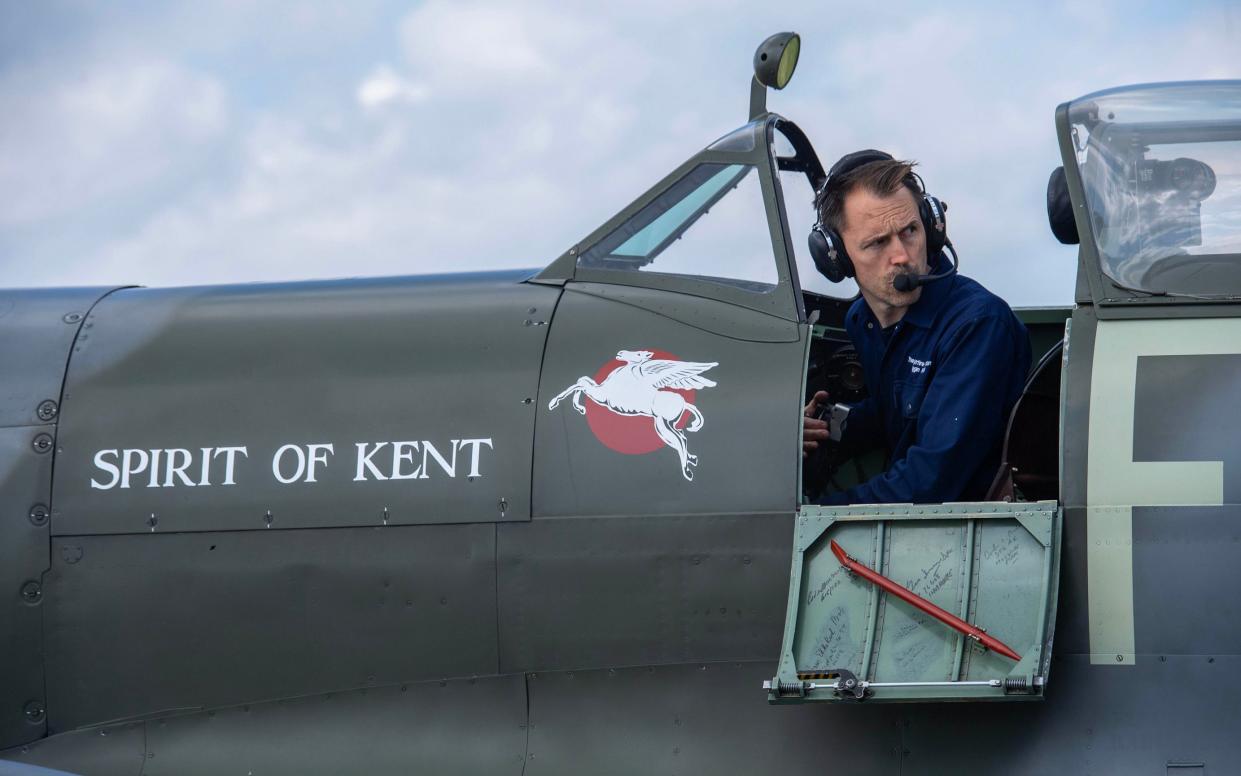
Groves hopes to continue his engineering training, as well as training to be a pilot himself. For now, he says it is an honour to work on these planes. As we speak, another Spitfire - one of the two-seater models – descends from the clouds, lands and taxis back to the hangar. A paying customer gets out, visibly elated. Groves and his colleagues must go and get the plane ready for its next outing.
“These aircraft helped us be where we are today, they’re the reason we’re not speaking German,” he says. “You go to museums and see all these aircraft and think “‘that’s cool’”, but they don’t fly. They should be in the skies, where they belong. I’ve always had a high level of respect for the people who fought for our country, together with the engineers who kept the aircraft in the skies. It’s an honour to follow in their footsteps.”


